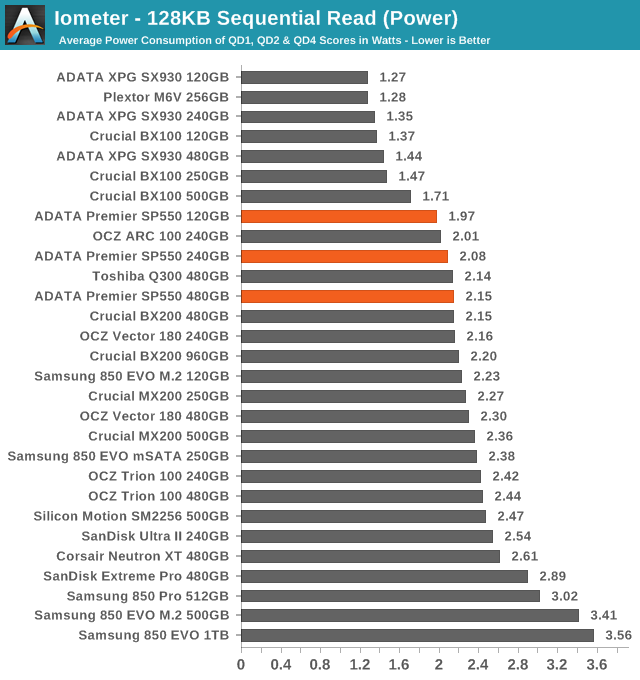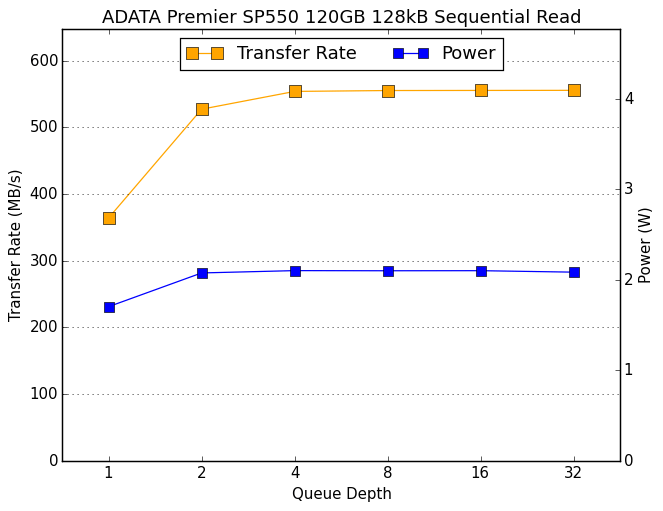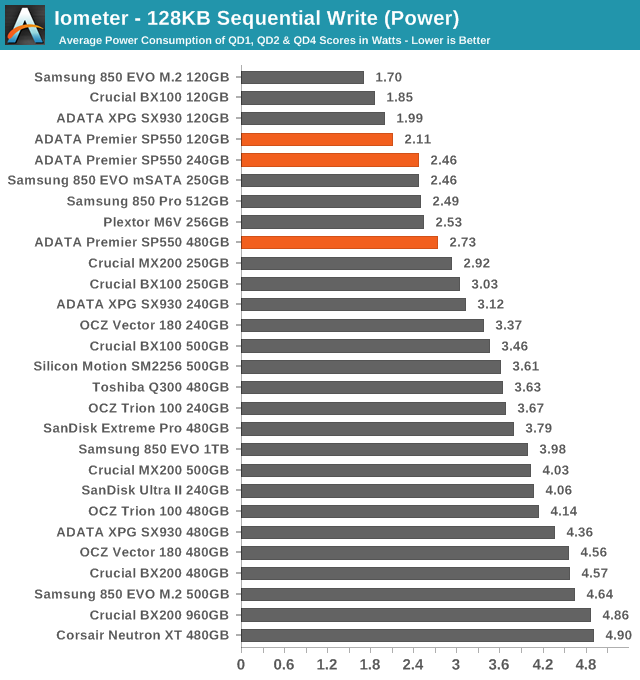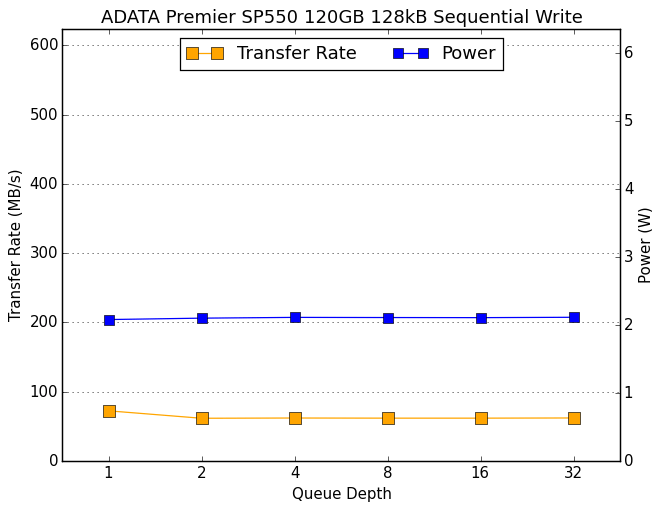The ADATA Premier SP550 SSD Review: A Second Look At Silicon Motion's SM2256 Controller
by Billy Tallis on March 23, 2016 8:30 AM ESTSequential Read Performance
The sequential read test requests 128kB blocks and tests queue depths ranging from 1 to 32. The queue depth is doubled every three minutes, for a total test duration of 18 minutes. The test spans the entire drive, and the drive is filled before the test begins. The primary score we report is an average of performances at queue depths 1, 2 and 4, as client usage typically consists mostly of low queue depth operations.

The sequential read speed of the SP550 places it in the second tier, but there's nothing to complain about.

Power consumption during sequential reads is not quite low enough for the SP550 to compete against the best MLC-based drives, but its efficiency is otherwise pretty good.
 |
|||||||||
The SP550's sequential read performance saturates by the time queue depth reaches 4 and is close at QD2. This drive isn't quite the fastest to reach its limit, but it's still easy to get full performance from it. The only real flaw here is the relatively low QD1 performance.
Sequential Write Performance
The sequential write test writes 128kB blocks and tests queue depths ranging from 1 to 32. The queue depth is doubled every three minutes, for a total test duration of 18 minutes. The test spans the entire drive, and the drive is filled before the test begins. The primary score we report is an average of performances at queue depths 1, 2 and 4, as client usage typically consists mostly of low queue depth operations.

As with the random write performance, the sequential write performance is very low. At this point even a good mechanical hard drive would be much faster, though several other TLC drives and some smaller MLC drives also fall below that threshold.

Power consumption is almost halved relative to the Crucial BX200, but that's still not enough for the SP550's efficiency on this test to be considered good.
 |
|||||||||
Performance and power consumption are slightly better at QD1 as the SP550 gets to burn through its SLC cache at the beginning of the test, but after that there's no scaling with queue depth.










25 Comments
View All Comments
Kristian Vättö - Sunday, March 27, 2016 - link
It takes about 25 to 30 minutes. The software doesn't try to playback the trace as fast as possible because that would result in unrealistic queue depths. All QDs are the same as in the trace, but idle times are truncated to 25µs to speed up the test.bogdan_kr - Friday, April 1, 2016 - link
Thank you, sir! It's good to know this.eek2121 - Saturday, March 26, 2016 - link
Just bought the 960 gb version of this drive to use for my Steam folder. A lot of people are bitching about TLC in this forum, but I've had 0 issues with my 840 EVO that I ordered 3 years ago.adam261222 - Thursday, June 23, 2016 - link
That moment you get 2 put them in raid 0 but you get speeds of 480MB/s read... Can you think of any fixes or reasons for why this is happening?Derrick Lo - Friday, July 1, 2016 - link
So far, I've been using the Adata Premier SP550 SSD (240GB) for about 4 months (since Mar-2016), and things are good: My laptop bootup speed is up by about 3 times, to under 30 seconds! Worth the upgrade from HDD to SSD!Only thing was the need to use a disk imaging software to copy the laptop OS & setup from the old HDD to the new SSD.